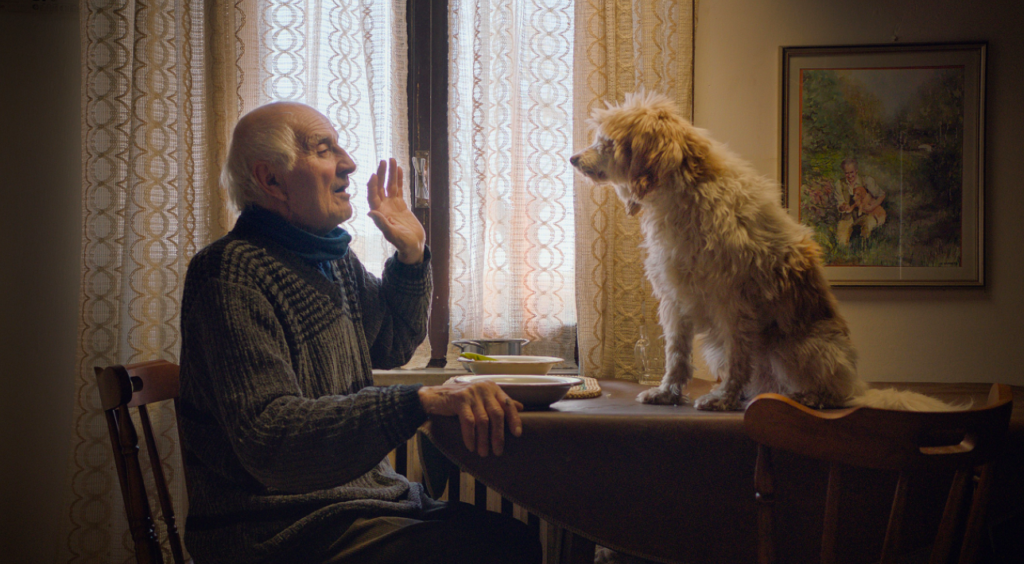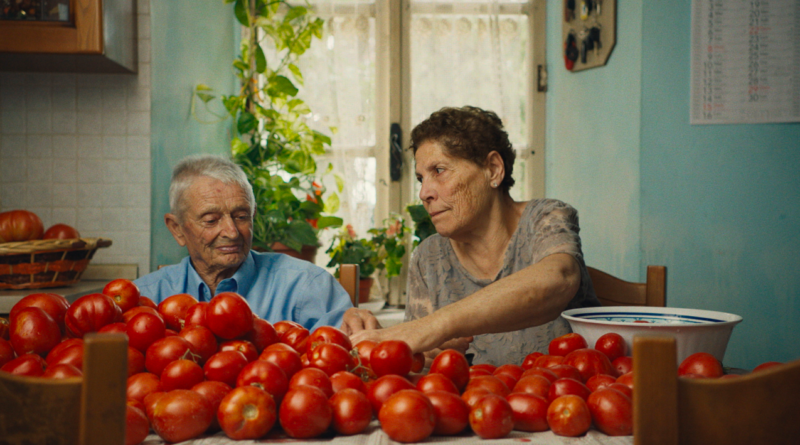INTERVIEW: New documentary goes hunting for truffles in Italy
Photo: Carlo Gonella and Maria Cicciù are featured in the new documentary The Truffle Hunters. Photo courtesy of Michael Dweck and Gregory Kershaw / Provided by Sony Pictures Classics with permission.
The Truffle Hunters, the new documentary from filmmakers Michael Dweck and Gregory Kershaw, heads into the woods of northern Italy with lifelong truffle hunters as they use their beloved dogs to find the fungal gold. The Oscar contender, out now from Sony Pictures Classics, allows audience members an intimate view of a generations-old tradition practiced by a select few who like to keep secret the details of where they find the truffles amongst the trees. The bounty of their efforts yields tremendous money on the international truffle market, which is a high-stakes business that seems worlds away from their delicate plucking from the dirty ground.
“Well, we kind of stumbled upon this place by chance,” Dweck said in a recent Zoom call. “Gregory and I are always interested both personally and professionally in these worlds that haven’t been taken over by globalization and have held on to their identity and their local culture.”
Both directors also worked on the documentary The Last Race, about a completely different tradition that is struggling to survive: local stock car racing. They finished that film in 2017 and both independently visited Piedmont, Italy, and when they met up again, the filmmakers started to talk about this tucked-away world that seemed to escape any sense of modernism.
“We started to talk about how we felt in this place, and what we felt was that this place wasn’t really what we were used to,” Dweck said. “This place seemed to be not part of the modern world in many ways, and it seemed like a fairytale storybook to us and had a different rhythm to it. And that attracts us in all of the projects we work on, so we went back two weeks later and then ended up spending three years. We started to find out about this secret society of truffle hunters that were scouring the mountains at night. No one would ever tell us who they were because they said they don’t know where they were.”
As Sony puts it, these hunters, who exclusively work at night, lead a simpler, slower way of life. They wake up in the morning in their modest farm dwellings, have breakfast with their family (or alone), dote on their dogs and dream of the hours to tick by so they can head into the forest when the sun goes down. Many nights they come home empty-handed, while other nights they find the goods and reap the benefits, selling their discoveries to agents who then turn a larger profit on the international market. Truffles are in demand at fancy restaurants and the best kitchens in Italy, France, the United States and around the world. The fungi provide a richly flavored accompaniment to many dishes, including eggs, pasta, salads and sauces. After watching the documentary, it becomes obvious that these hunters are in it for the thrill of the chase rather than the monetary rewards, but it was a challenge for the filmmakers to find the men who headed to the woods each night.
“We were in a trattoria, and we’d ask the question, ‘Well, you have this beautiful white dish with a glass cover, and you have these three truffles in it. And it says 40 euros a gram. Where’d you get these from?’ They’d say, ‘We don’t know. We put money in the wooden box outside, then in the morning the truffle is in there. That’s all we know.’ That’s how it started,” Dweck said. “We ended up spending years there just trying to immerse ourselves in this community and make a film that really would make you feel how we felt in this place in many ways. We used everything we could — the power of cinema, sound, the picture. We’d like to use the smell, but we think we accomplished part of that with the sound.”
After the directors got to know the community in Piedmont, they eventually won the trust of some locals and were introduced to the truffle hunters. From this group, Dweck and Kershaw selected their main subjects for the film — all fascinating portraits of professional men who have been in the business for decades.
“Everything in this world is a secret: Where they find the truffles is a secret, where they sell the truffles, how they sell them, everything is a secret,” Kershaw said. “It took time. We built friendships. Even before we brought out the camera, we built relationships with the people we were filming.”
It was a multi-step process for the filmmakers. First, the community. Then, the truffle hunters. Then, a trip into the woods to their secret spots where these rare and delectable fungi are found under the dirt. The dogs sniff them out, but the canines have to be careful because sometimes rivals will plant poison in the forests for the unsuspecting animals.
“That [extended] time actually I think did something much more important for the film,” Kershaw said. “It allowed us to really understand their world, the world that we were filming. It allowed us to understand the relationships that surrounded them. We didn’t go into this film with any sense of a story. We went into this film because we were kind of enchanted by this place. It drew us in, and as Michael said, we wanted to capture the feeling of this place on film and translate it through cinema into something that would allow the audience to feel what we felt while we were there.”
They were taken in by the placid, tranquil lives, which were surrounded by serious questions about the loss of this tradition and the possible exploitation of their hunting efforts. The dichotomy served as an interesting juxtaposition.
“We did come across some younger truffle hunters, but they didn’t seem to have the same passion that these men have,” Dweck added. “These men don’t really use technology. They don’t have iPhones in their pocket. They don’t have laptops at home checking email. They don’t have any of that. Like in the case of Carlo, he’s a farmer. … A lot of them are farmers during the day, and at night they go truffle hunting. So people like Carlo, we were following him for so long that we’d see him in the field. There’d be tall grass, and instead of getting some power tool he would pull out a sickle and a stone, and sharpen it. He had this method, back and forth, and he’d start carving a path through the tall grass with this beautiful rhythm that he seemed to be doing most of his life.”
Dweck added: “I remember we were filming him, and his grandson was standing behind us. He was asking, ‘Why are you filming my grandfather doing this? It seems quite boring.’ And we showed him how we thought it was just so beautiful. He said, ‘Well, to me, I would just take a chainsaw and go through that in five minutes instead of sitting there for four hours.’ And that kind of told us a lot of the reason why it has been the same for six or seven generations, and now it’s being threatened. We fell in love with this region and with this community, and we’re trying to do whatever we can to preserve the community.”
By John Soltes / Publisher / John@HollywoodSoapbox.com
The Truffle Hunters, directed by Michael Dweck and Gregory Kershaw, is now playing in select theaters from Sony Pictures Classics. Click here for more information.


